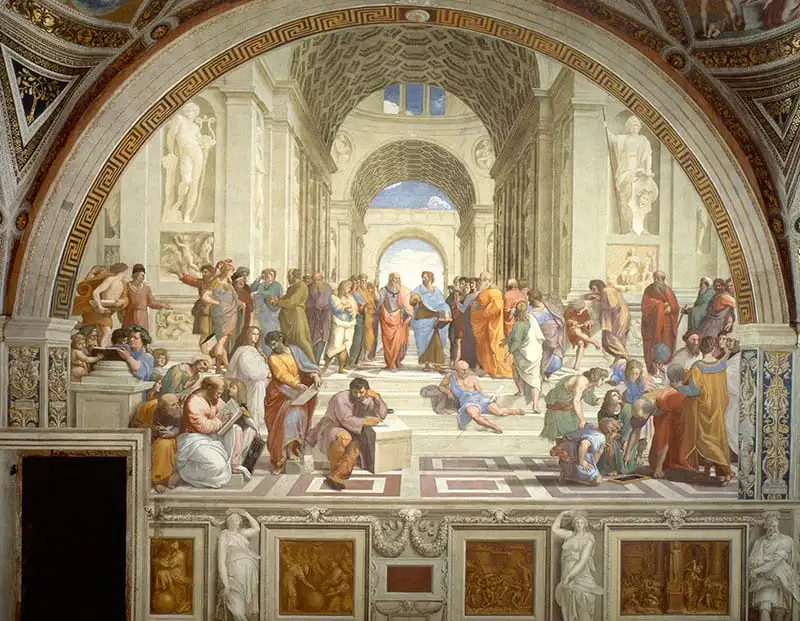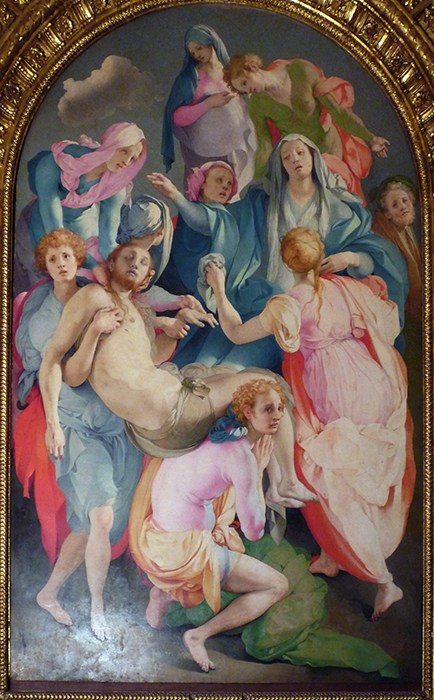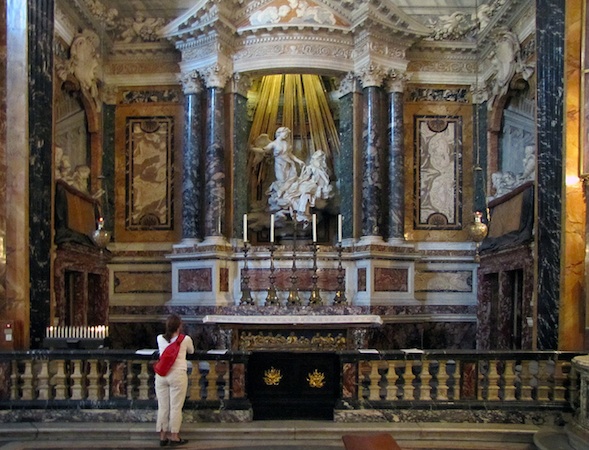JA4. Effects of Classical Art on Art of 15-18th Century Europe¶
Statement¶
Referring to resources listed in the Reading Assignments throughout the course, please address the following.
- How has the Classical tradition (the art of Greece and Rome) continued to affect art through the Renaissance, Baroque, and Rococo periods?
- In what ways have artists working during these periods turned away from the Classical tradition?
Answer¶
Introduction¶
The classical arts of Greece and Rome were characterized by a focus on idealized forms of beauty, harmony, and proportions; the human, the Gods, and the relationship between them were the main subjects of the art; the art was obsessed with symmetry in a realistic representation of the human body, while topics like golden ratio, fresco painting, and the use of marble were common in the art of the time (The Art Story, 2016). Then came the Middle Ages where the focus of the art was shifted away from the human body under the pressure of the Church; the focus moved towards abstraction, symbolism, and religious themes. The text will discuss each period separately focusing on the effect of classical art on this period and how artists turned away from the classical tradition.
The Renaissance¶
The Renaissance period was a time of revival and rebirth of the classical arts of Greece and Rome; as opposed to the Middle Ages, artists were inspired by ancient Greek works on the human body; this was also amplified by the rise of Humanism. The fall of Constantinople in 1453 led to the migration of Greek scholars to Italy where Italian artists learned from them. A great example of affection toward Greek culture would be the painting of the Academy of Athens by Raphael, where he painted the great philosophers of the time Plato and Aristotle surrounded by other philosophers (Davis, 2019). The Mona Liza by Leonardo da Vinci is another example of the human-centered and emotional art of this time.
 |
|---|
| Academy of Athens by Raphael (Davis, 2019) |
The artists of the Renaissance period turned away from the classical tradition in a few ways. The Mannerism movement was a reaction to the classical tradition; it was characterized by deviation from the golden ratio, unconventional poses, and the emphasis on artificial over the realistic. The Pontormo painting is a great example of this movement (Graham H. & Kilroy-Ewbank L., 2023).
 |
|---|
| Pontormo (Graham H. & Kilroy-Ewbank L., 2023) |
The Baroque¶
The Baroque period was a period of drama and emotions; artists were interested in showing the power of the Church and the State; they used light and shadow to create drama and emotions in their works. This was similar to the classical art that devoted the work to Gods and art was a way to get closer to the Gods. The Ecstasy of Saint Teresa by Gian Lorenzo Bernini is a great example of the Baroque style; the use of art to convey spiritual emotions, as if were a talking sculpture (Harris & Zucker, 2023).
 |
|---|
| Ecstasy of Saint Teresa by Gian Lorenzo Bernini (Harris & Zucker, 2023) |
The Baroque artists turned away from the classical tradition by focusing on drama and emotions and using light and shadow contrast to convey the message of the work; thus, the art focused more on the story rather than the actors themselves, and we can see that clearly in the Ecstasy of Saint Teresa as the purpose is the spirituality of the moment rather than the Saint herself.
The Rococo¶
The Rococo period was a period of art and “interior design with an aristocratic idealism that favored elaborate ornamentation and intricate detailing” (The Art Story, 2017). The work with aristocracy (or people in power) was a common theme in classical art, as art was sponsored by rich and powerful kings and emperors.
The artists of the Rococo period turned away from the classical tradition by its rich landscape and detailing specific people in intimate moments; The Swing by Jean-Honoré Fragonard is a great example of this as it paints the client with a romantic moment with a lover (Smart History, 2023).
 |
|---|
| The Swing by Jean-Honoré Fragonard (Smart History, 2023) |
Conclusion¶
The classical tradition of Greece and Rome has greatly affected the art of the Renaissance, Baroque, and Rococo periods; though each period has its unique style and characteristics that differentiate it from the classical traditions.
References¶
- Davis, C. (2019, November 10). Classicism and The Renaissance: The Rebirth of Antiquity in Europe. TheCollector; TheCollector. https://www.thecollector.com/classicism-and-the-renaissance-the-rebirth-of-antiquity-in-europe/
- Graham H. & Kilroy-Ewbank L. (2023). Khanacademy.org. https://www.khanacademy.org/humanities/renaissance-reformation/high-ren-florence-rome/pontormo/a/mannerism-an-introduction
- Harris B. & Zucker S. (2023). Khanacademy.org. https://www.khanacademy.org/humanities/renaissance-reformation/baroque-art1/baroque-italy/a/bernini-ecstasy-of-saint-teresa
- Smart History. (2023).– Jean-Honoré Fragonard, The Swing. Smarthistory.org. https://smarthistory.org/jean-honore-fragonard-the-swing/
- The Art Story. (2016). Greek and Roman Art and Architecture. The Art Story. https://www.theartstory.org/movement/classical-greek-and-roman-art/#:~:text=Summary%20of%20Classical%20Greek%20and%20Roman%20Art%20and%20Architecture&text=While%20often%20employed%20in%20propagandistic,and%20proportion%20occupied%20art's%20subject.
- The Art Story. (2017). Rococo Movement Overview. The Art Story. https://www.theartstory.org/movement/rococo/#:~:text=Painting%20was%20an%20essential%20part,Marc%20Nattier%2C%20and%20Fran%C3%A7ois%20Lemoyne.